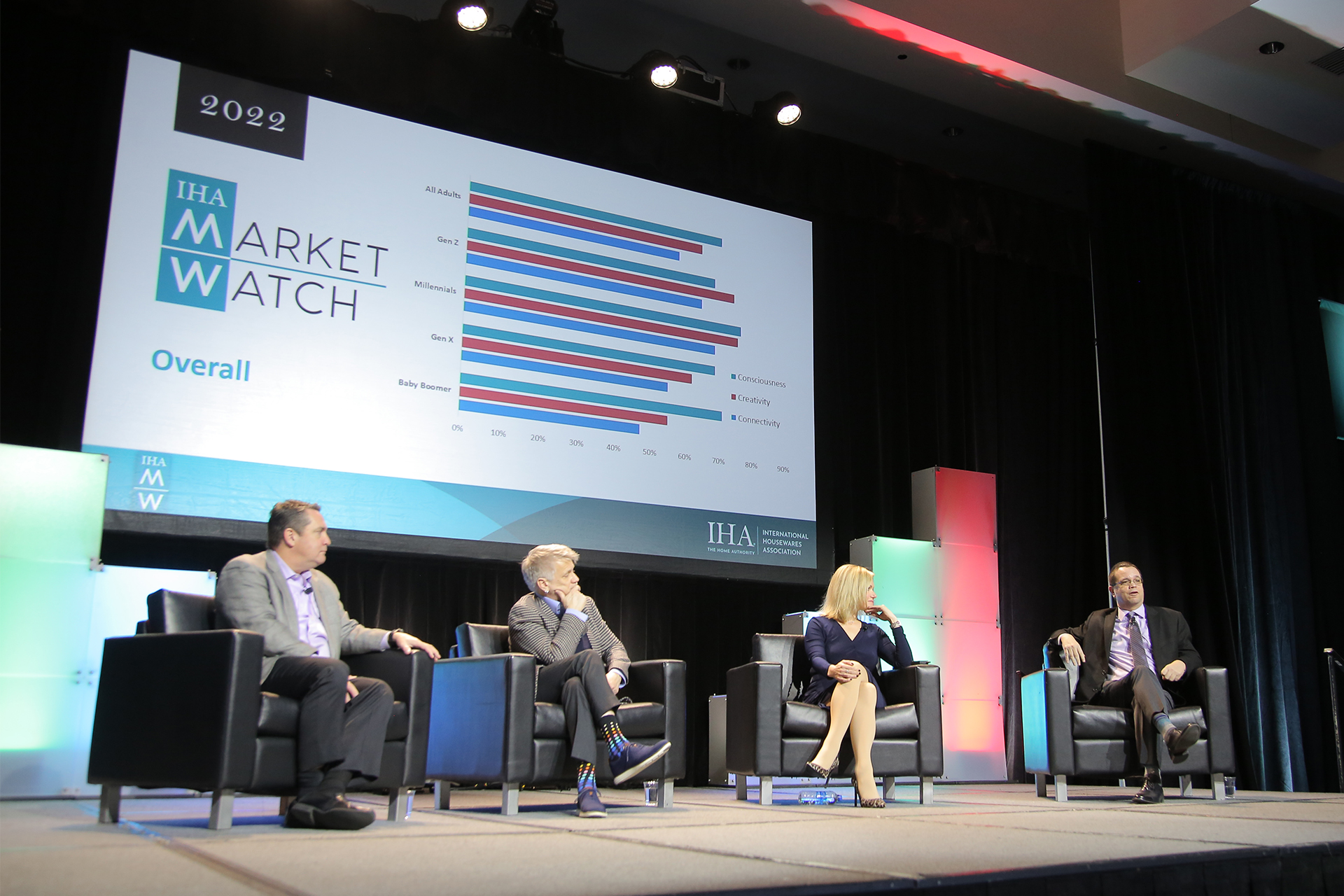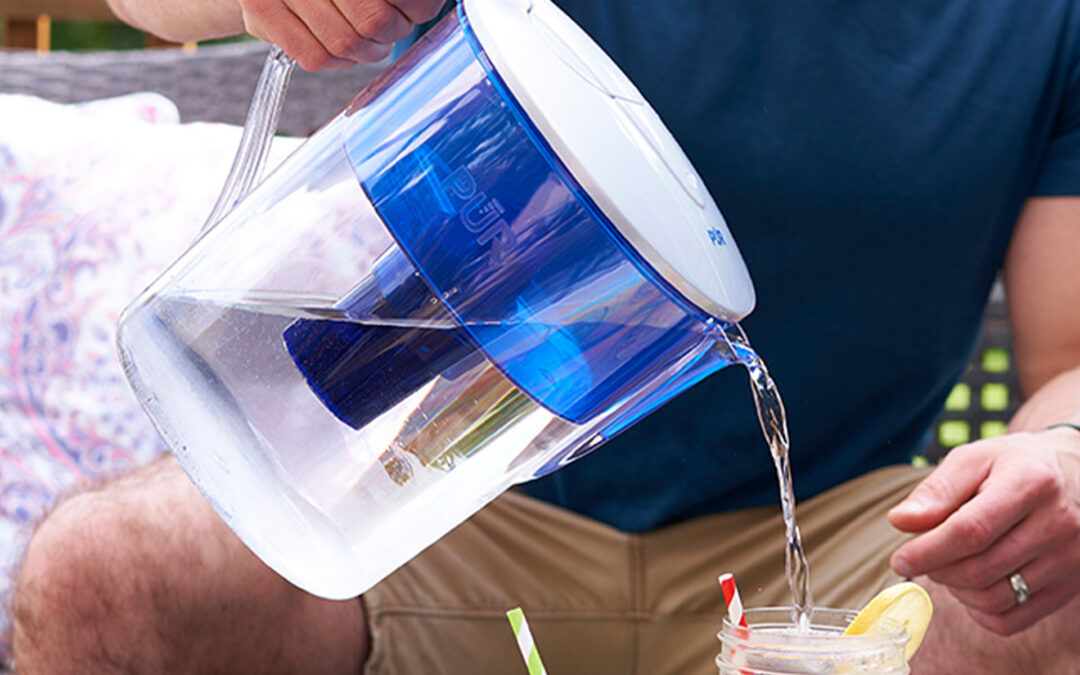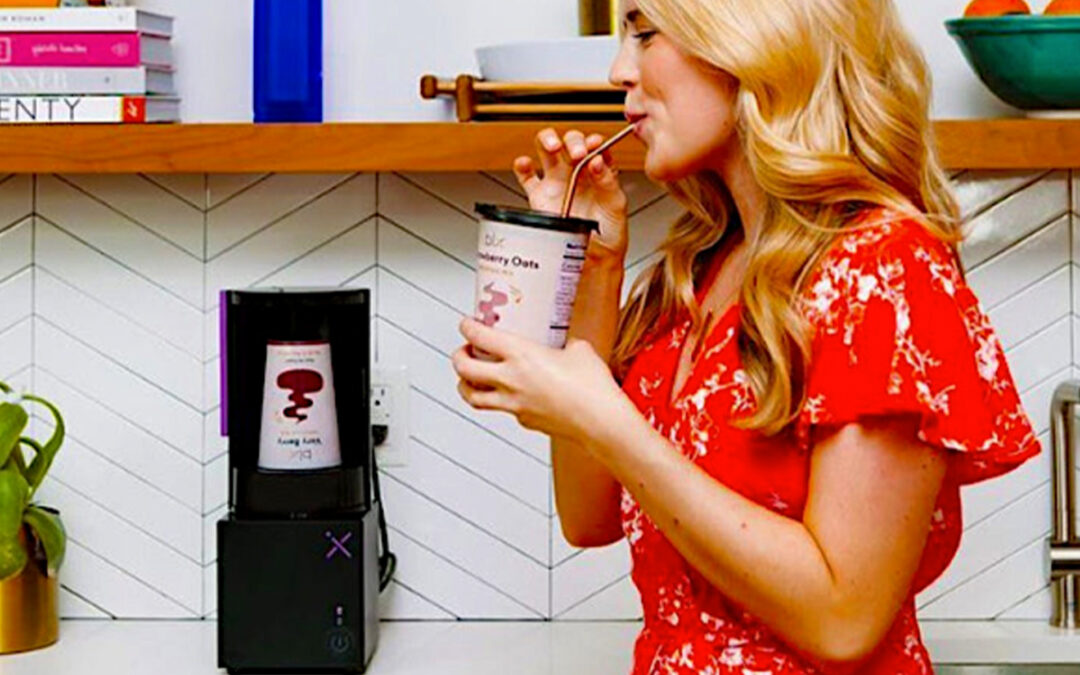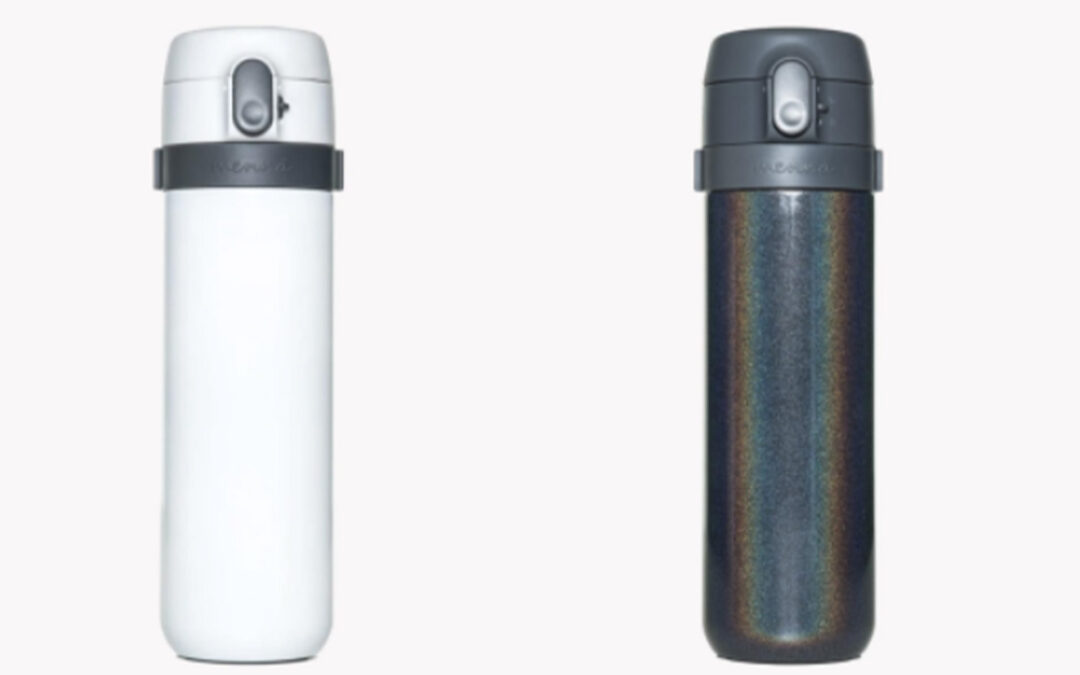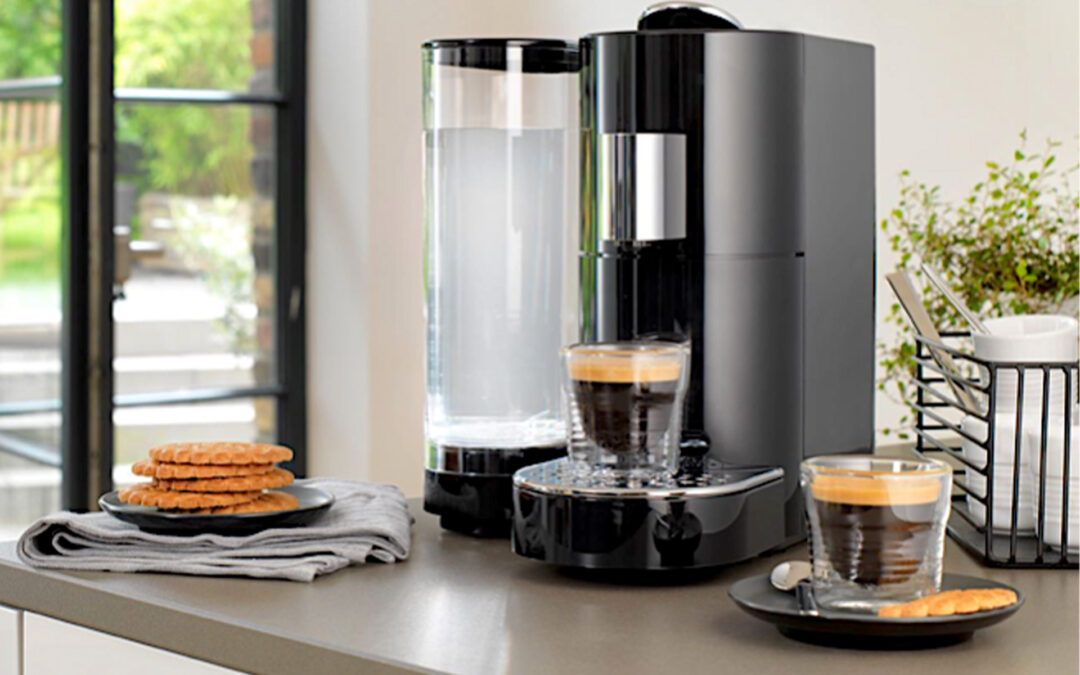In the Sunday morning keynote session at The Inspired Home Show, the authors of the IHA Market Watch offered insight into the consumer values and demands that are driving purchases as we evolve from pandemic to endemic in 2022.
Moderated by Peter Giannetti, editor-in-chief of HomePage News
, the Market Watch panel included Leana Salamah, vice president of marketing, IHA, Tom Mirabile, principal of Springboard Futures, and Joe Derochowski, vice president and home industry advisor for The NPD Group.
“We took a deep dive into the attitudes and value sets of consumers with a survey conducted in January of 2022,” said Leana Salamah, IHA vice president, marketing. “Our goal is not to be prescriptive in terms of ‘This is exactly what you should do to reach consumers.’ Our goal is to provide some insights into what you might want to be looking at as we move into the next year.”
The session focused on the three “C’s” of lifestyle influences that frame the 2022 IHA Trend Watch that the Market Watch team developed:
Consciousness
: The conscious consumer lends careful consideration to why someone selects a given product and company. Areas of focus include health & wellness (with an emphasis on mental and physical wellness), sustainability, social responsibility, time savings and control.
Here, wellness took on a major focus in the survey, with mental wellness as most important (77%) and physical wellness next (73%). Meanwhile, there has also been a shift away from weight management with more emphasis on feeling good.
This emphasis on mental wellness is unique right now, and therefore a huge opportunity for the housewares industry noted Derochowski. After a two-year pandemic, “we’re sick and tired of being sick and tired,” he said.
Social responsibility is an important factor, especially among younger generations, with a majority of respondents in those age groups ranking safe and healthy working environments for employees (84%) highest, followed by the development of sustainable products (72%) and diversity and inclusion (67%).
Also important of note is consumer emphasis on reclaiming time and focusing their energies on what they love. When making purchase decisions, they are most interested in ease of use (92%), speed (83%) and more control (78%).
“This is all about keeping what you love in your life and eliminating friction,” said Mirabile. “For so many of us, time is friction.”
Creativity: The creative consumer seeks out variety, flexibility and learning in their lifestyle. Areas of focus include adaptability, use of space, style/design, experiential value, fluidity and content.
Here, the Market Watch team revealed that the majority of consumers are interested in making changes in their home based on new creative endeavors, as well as the new skills they have learned amid the pandemic shutdown. However, cost plays a major factor in making that final decision.
“Understanding there’s a great desire to make change is the first step,” said Giannetti. The next step is giving consumers a way to make those changes more accessible.
The Market Watch team explored possible solutions such as providing rentals or trial periods of products to consumers, subscription services and trade-in programs to remedy the hesitation of making a large purchase before they are financially able to.
Connectivity: The connected consumer loves bringing things together whether people, technology or brands. Areas of focus include in-home entertaining, social gathering, interpersonal relations, share-ability, smart/digital-forward problem solving and co-creation.
And while smart home products have been on the rise, the Market Watch authors agreed the adoption of this technology just hasn’t taken off the way many thought it would have by now. This is in part due to quickly changing technology and in part because some smart products have technology just for the sake of it and are not necessarily solving a consumer pain point, such as automatic cleaning.
“Consumers have trouble conceptualizing, so the industry needs to make it easier for consumers to see and understand how a smart product can help them,” said Derochowski.
The survey revealed that product areas with the biggest increases in expected purchases in 2022 over 2021 are security (42% vs 31%), home environment (38% vs 28%), meal prep (24% vs 14%), health (29% vs 20%) and cleaning (32% vs 24%).
Overall, the Market Watch team noted that all of these consumer identities are fluid and consumers are a cross-section of all three of the influences.
“Consumers have fallen in love with their home again,” said Giannetti. “So the question becomes what can we do to keep that romance going?”

